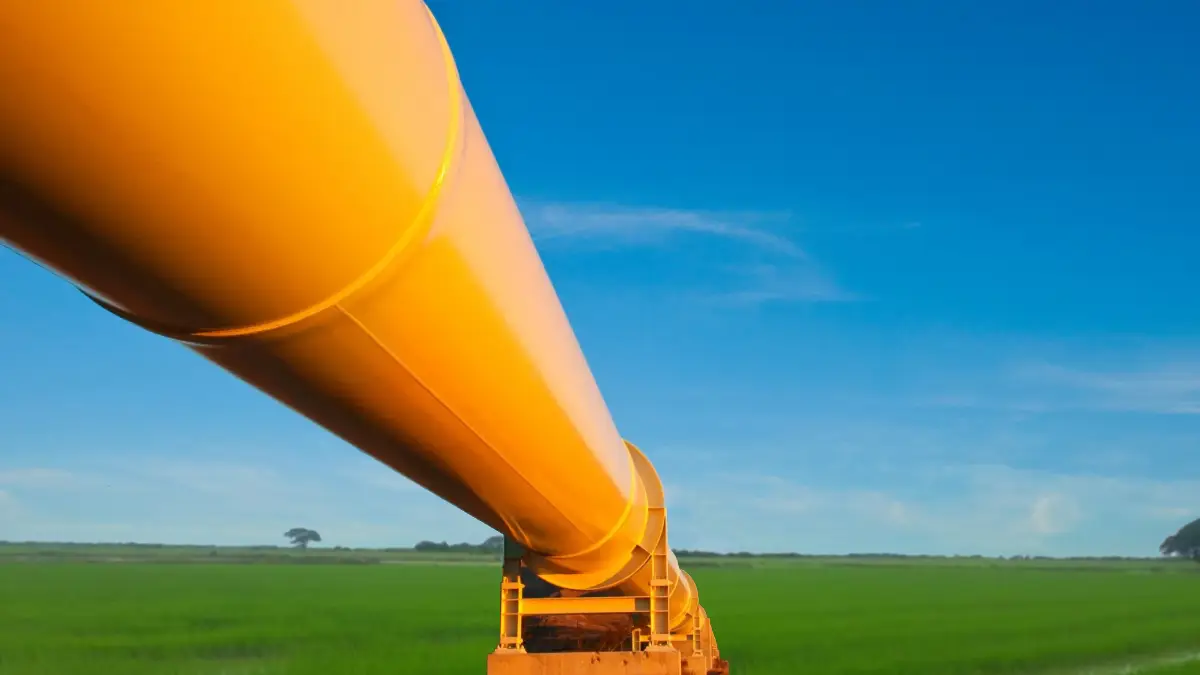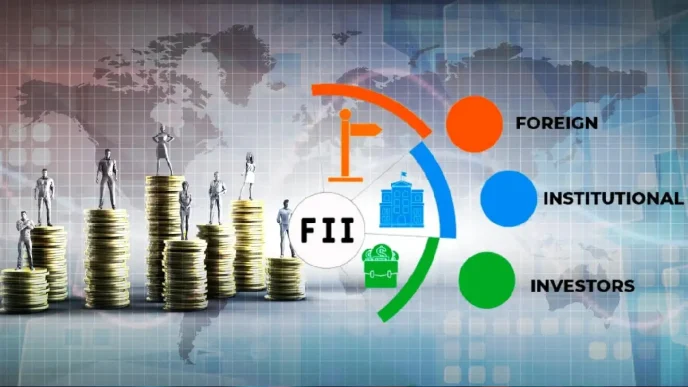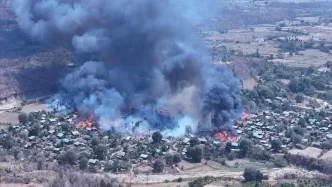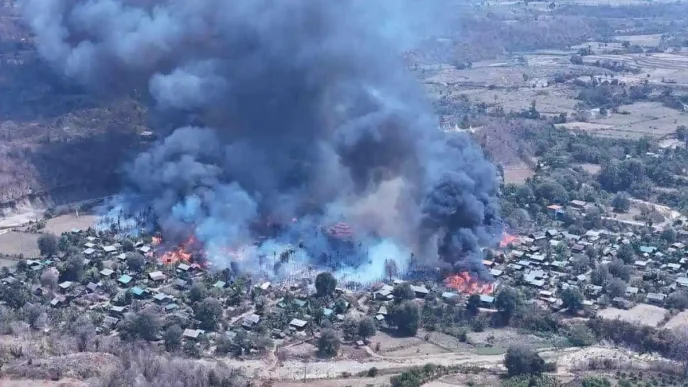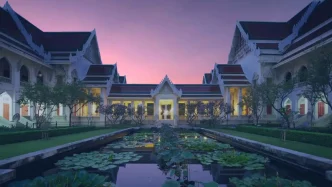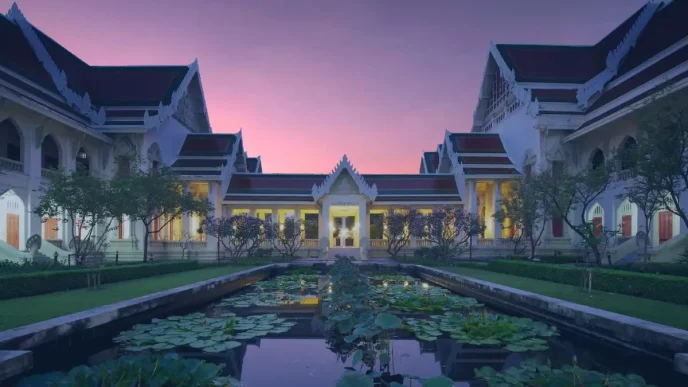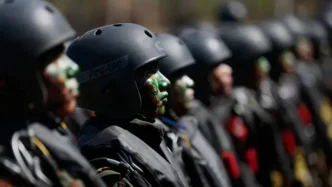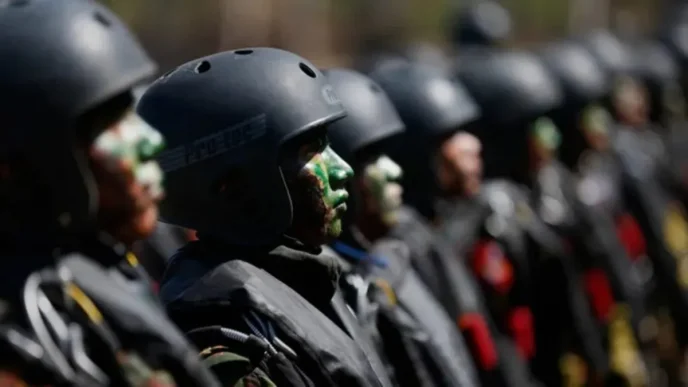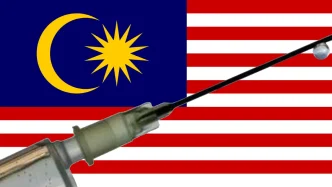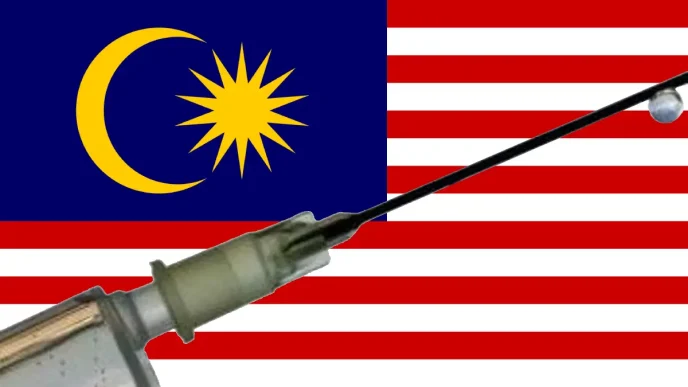In Myanmar’s southern Tanintharyi Region, anti-regime forces are tightening their grip on territory surrounding vital natural gas pipelines that supply billions of dollars’ worth of fuel to Thailand. This strategic advance by groups like the Karen National Union (KNU) raises questions about the security of a critical energy corridor and the delicate balance of power along the Thailand-Myanmar border.
Expanding Control Amid Conflict
Since the military coup in February 2021, resistance forces in Myanmar have steadily expanded their influence, particularly in border regions. In Tanintharyi, anti-junta groups, including the KNU’s Brigade 4, have claimed significant territory along the route of pipelines that transport gas from offshore fields in the Andaman Sea and Gulf of Mottama to power plants in Thailand. These pipelines, originating from the Yadana, Yetagun, and Zawtika gas fields, traverse over 40 miles through Yebyu Township, passing through villages like Kan Pauk and the town of Kaleinaung before reaching the border.
According to Padoh Saw Eh Na, district secretary of the KNU for Brigade 4, the resistance has made substantial gains in the area since 2024. “They haven’t been able to secure the gas pipeline since 2024″. His statement underscores the diminishing reach of Myanmar’s military in the region, now rebranded as the military commission. The KNU and allied forces reportedly control most of the territory between Route 8—a key segment of the Asia Highway running through Yebyu Township—and the border with Thailand.
Despite these advances, the Myanmar military retains control over some strategic base camps near the pipeline and much of the territory west of Route 8, closer to the coast. Clashes between junta troops and anti-junta fighters remain frequent. On August 4, a column of approximately 60 soldiers attempting to reinforce a base engaged in a 45-minute battle with resistance fighters, including members of the People’s Defence Forces (PDF). The military retreated after suffering casualties, according to PDF spokespersons.
Strategic and Economic Stakes
The gas pipelines in Tanintharyi are more than just infrastructure; they are a lifeline for Thailand’s energy needs and a significant source of revenue for Myanmar’s military regime. Millions of cubic feet of natural gas flow through these pipelines daily, feeding power plants across the border. Thai energy giant PTT operates the Yadana and Zawtika projects, while Northern Gulf Petroleum, another Thai company, manages the Yetagun field. Following the 2021 coup, several international firms withdrew their investments, allowing Thai companies to increase their stakes in these projects.
The pipelines, some of which were constructed under Myanmar’s former military dictatorship as early as 1997, represent heavy foreign investment. Limited domestic funding forced the regime to rely on international partners, offering substantial profit shares in exchange for infrastructure development. This economic interdependence complicates the current conflict, as any disruption to the pipelines could have ripple effects beyond Myanmar’s borders.
Padoh Saw Eh Na emphasized that the KNU aims to manage the pipeline within its controlled territory responsibly, prioritizing good relations with Thailand and the welfare of local communities. The group also seeks to oversee border trade, balancing resistance efforts with diplomatic considerations. However, not all anti-junta factions share this approach. The Kawthoolei Army (KTLA), a splinter group from the KNU, controls segments of the pipeline and has reportedly considered shutting it down or sabotaging it to cut off profits to the military junta, according to regional reports.
Such actions could provoke significant backlash. Thailand, which relies on this gas for its energy security, has maintained informal ties with Karen groups for decades. Yet, energy sector sources suggest that even if anti-junta forces gain full control over the territory, Thailand is unlikely to offer unequivocal support. Instead, Thai authorities might employ tactics like counterblockades or other forms of pressure to protect their interests. A disruption to gas supplies would directly impact PTT, a major stakeholder, and could strain bilateral relations.
Geopolitical Risks and Local Dynamics
The situation in Tanintharyi highlights the complex interplay of local resistance, national politics, and international economics. Anti-junta groups in the region depend heavily on supply routes from Thailand for weapons and resources, making them vulnerable to shifts in Thai policy. Energy sector observers warn of potential retaliatory measures, including counterblockades by Thai authorities, vigilante actions by nationalist groups, or opportunistic attacks by the Myanmar military.
Thailand’s nuanced position reflects a broader geopolitical reality. While the country has historically engaged with ethnic resistance groups like the KNU through backchannel diplomacy, its economic interests—particularly in energy—take precedence. Any perceived threat to the pipelines could prompt a reevaluation of these relationships, potentially tipping the balance against the resistance forces.
Within Myanmar, the differing strategies among anti-junta groups add another layer of uncertainty. While the KNU under Padoh Saw Eh Na’s leadership appears committed to maintaining stability around the pipeline, the KTLA’s more aggressive stance raises the specter of sabotage. Such an act would not only disrupt gas supplies but could also alienate local communities and international stakeholders, undermining the broader resistance movement.
Historical Context of Resistance
The KNU, as Myanmar’s oldest ethnic national organization, has resisted central authority for decades, advocating for autonomy in regions like Tanintharyi, which includes the towns of Myeik and Dawei. Brigade 4’s current territorial gains build on a long history of struggle against military dominance, a fight that intensified after the 2021 coup. The coup, which ousted the democratically elected government, galvanized a nationwide resistance, with ethnic armed organizations like the KNU and newer groups like the PDF forming a loose coalition against the junta.
Tanintharyi’s strategic importance, due to its proximity to Thailand and its role as an energy corridor, has made it a focal point of this conflict. The region’s pipelines are not only a source of revenue but also a symbol of the junta’s reliance on foreign investment to sustain its rule. By targeting control over these assets, resistance forces aim to weaken the military’s economic base while asserting their own governance in contested areas.
Broader Implications for Myanmar’s Energy Sector
Myanmar hosts four active offshore oil and gas projects, with the Shwe project—operated by South Korea’s POSCO—supplying gas to China from the Rakhine State coast. The Tanintharyi pipelines, however, are uniquely significant due to their direct connection to Thailand, a key regional partner. The post-coup withdrawal of Western energy companies has shifted the sector’s dynamics, with Thai firms stepping in to fill the void. This realignment underscores Thailand’s growing influence over Myanmar’s energy landscape, even as political instability threatens operational continuity.
For local communities in Tanintharyi, the conflict over the pipelines is more than a geopolitical chess game. Civilians in areas like Yebyu Township live under the constant shadow of violence, caught between military bases, resistance fighters, and the economic interests of foreign investors. The KNU’s pledge to prioritize civilian well-being will be tested as territorial control evolves and clashes persist.
Looking Ahead
As anti-junta forces consolidate their hold over parts of Tanintharyi, the future of the gas pipelines remains uncertain. Will resistance groups like the KNU manage to balance their military objectives with the need for regional stability? Or will internal divisions and external pressures lead to disruptions with far-reaching consequences? For now, the pipelines stand as both a lifeline and a flashpoint in Myanmar’s ongoing struggle for power, with Thailand watching closely from across the border.

